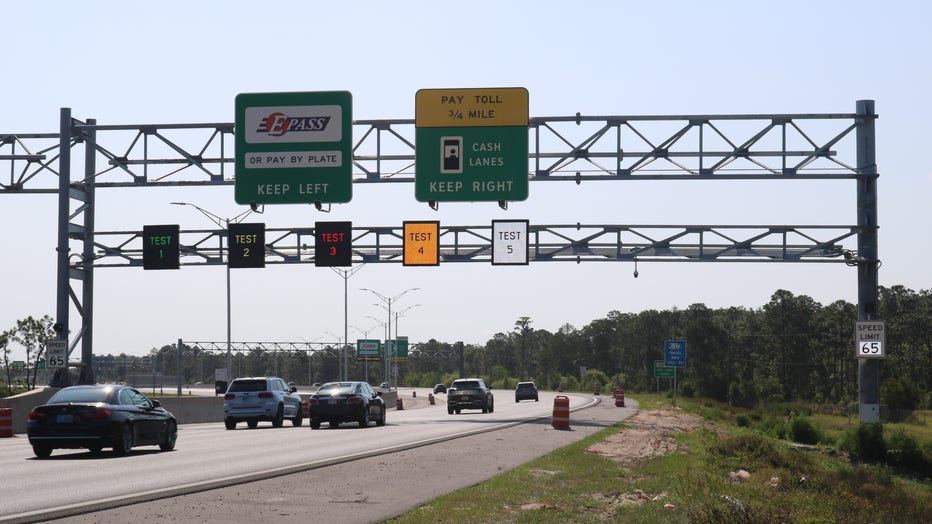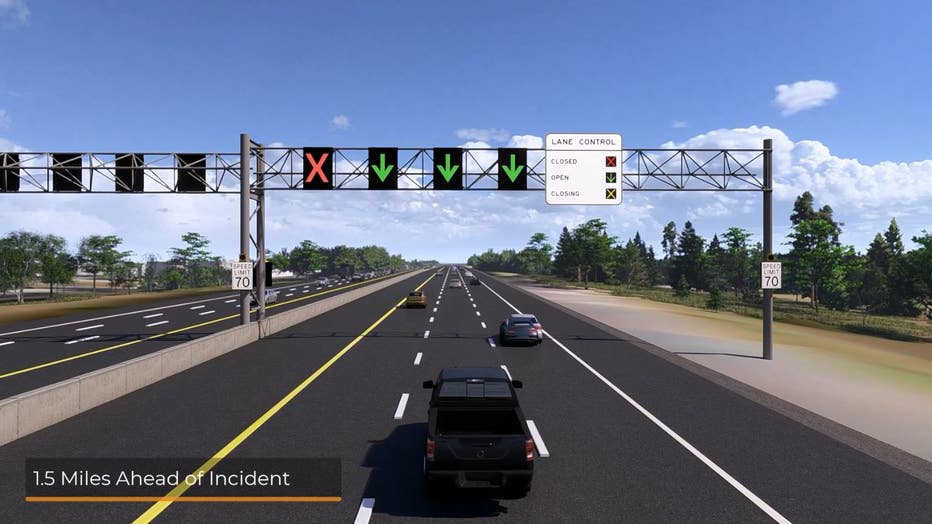Driving on the shoulder is now an option with Central Florida's new 'flex lanes': How they work

Driving on the shoulder allowed with new 'flex lanes'
Drivers in Central Florida will be able to drive on the shoulder as part of the Central Florida Expressway Authority's new "flex lanes" program. This allows the left shoulder to temporarily open to traffic when an accident blocks the right lanes with the goal of keeping traffic flowing.
ORLANDO, Fla. - Big changes are coming to select Central Florida highways.
The Central Florida Expressway Authority is working on a "flex lane" system on SR-417 – and soon, SR-429 – which will open the left shoulder when there's an accident, debris, work zone or emergency medical services on the scene. It's the first system of its kind in the southeastern United States, according to the agency.
The initiative has been in the works for years, and now testing is currently underway on SR-417 between International Drive and John Young Parkway. "Flex lanes" on this 3-and-a-half stretch of 417 are expected to officially open later this summer, in either late July or early August, a spokesperson for the agency told FOX 35.

The Central Florida Expressway Authority is testing "flex lanes" on SR-417 between International Drive and John Young Parkway. (Photo: Central Florida Expressway Authority)
The "flex lanes" on 417 from John Young Parkway to SR-528 plan to open through the end of the year as construction continues. The agency said the "flex lanes" will not be open while construction is active.
On SR-429, "flex lanes" are planned between Tilden Road and SR-414, and they're expected to open by the end of 2025.
Officer rescues kitten from busy Florida highway
On the highway, drivers will see new gantries, or road sign structures, that notify of an upcoming "flex lane," or when the shoulder will be temporarily open if an incident happens in one or more of the right lanes. Each lane will have an arrow above it – a green arrow means a lane is open, a red "X" means the lane is closed, and a yellow "X" means the lane is either about to open or close ahead. Additionally, the speed limit will be reduced from 70 mph to 55 mph.

The Central Florida Expressway Authority is testing "flex lanes" on SR-417 between International Drive and John Young Parkway. (Photo: Central Florida Expressway Authority)
"We've tried to make the system as intuitive as possible, using simple symbols – red ‘X’ being lane closed, (yellow) ‘X’ meaning it's going to be closed ahead, and a green arrow for a lane that's open," said Bryan Homayouni, director of intelligent transportation systems with the agency, during a Central Florida Expressway Authority Board meeting on May 9.
This Florida county is the deadliest for traffic deaths: report
The "flex lanes" were created with daily congestion relief in mind for the future, but in the short-term, the Central Florida Expressway Authority is using them for incident management. The goal is to keep traffic moving, even if there's something blocking traffic, like a crash or when first responders say it's necessary to get people out of the way.
That doesn't mean that drivers can access the left shoulder whenever they see fit, however.
Homayouni explained during the board meeting that even though the shoulder might be open temporarily due to an incident, it'll still act like a normal shoulder you'd see on any other road.
"That inside shoulder that has the flex lane itself is going to be striped and drive like a shoulder today. We have the yellow inside line, there's going to be rumble strips, and there's not going to be any friction course on that shoulder," Homayouni said. "In other words, it's going to look, taste, feel very much like any other shoulder you see out on the roadways, which is not very encouraging for drivers to just jump on in normal traffic conditions."
This Florida city has the worst drivers in the US, report says
Additionally, there are cameras on the highways to help traffic operators know what's going on.

How 'flex lanes' work in Central Florida
The Central Florida Expressway Authority shared a video of how its new "flex lanes" will work. (Video: Central Florida Expressway Authority)
Before the "flex lanes" become fully operational on Central Florida's highways, Homayouni said drivers will become familiar with the new system through traffic signs and marketing.
The Central Florida Expressway Authority is also working with local law enforcement agencies like the Florida Highway Patrol, the Orange County Sheriff's Office and the Orlando Police Department to enforce the "flex lanes" and cite appropriately.

